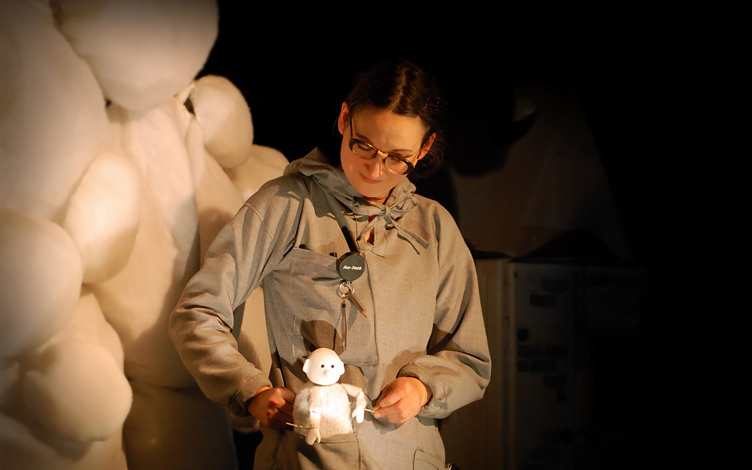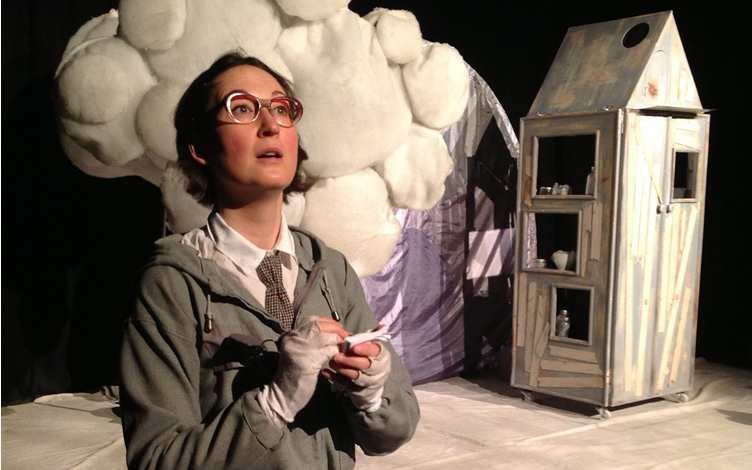How puppetry makes big issues relatable to children
Their unvarying intensity of facial expression, impossible for living actors, keeps the imagination of the spectators continuously stimulated … there is nothing wonderful in a living actor moving and speaking, but that wooden headed puppets should do so is a marvel that never palls. George Bernard Shaw, playwright
The late George Bernard Shaw was not the first and certainly not the last to be fascinated by the magic of puppetry. Give your child a doll or a soft toy and it is only a matter of time before he tries to make it come alive by moving its limbs or giving it a voice.
While this may be a rudimentary form of puppetry, the art form which combines visual art and storytelling is a natural extension of a child’s inclination to play, tell stories, and create characters and new worlds.
For Israel’s The Key Theatre, creator of When All Was Green, an award-winning puppetry production inspired by Shel Silverstein’s popular picture book The Giving Tree, puppetry is a medium that lends itself well to the fertile imaginations of children. Ailie Cohen and Lewis Hetherington, the British creators of the puppetry-infused Cloud Man, feel the same way. Both productions were part of the Octoburst! 2017 line-up.

When All Was Green, a wordless puppetry performance that tells of the story of a boy and the immense danger mankind is causing to the world.
A puppetry performance can inspire the young, no matter their age or emotional capacities. Here are three reasons why.
Because gestures are a universal language
Before a child even begins to utter his first word, he responds to and through movements and expressions. In fact, babies can read facial expressions soon after birth and become adept at reading the non-verbal.
Puppetry depends on gestures to transmit meaning and to express nuances, which the young can identify with. Both Cloud Man and When All Was Green use movement to create poignant moments that children can relate to.
In When All Was Green, a tale about a boy and a tree and green fields that are lost amongst grey concrete, every gesture has a story to tell. A hand grabbing at the branches of an aging tree, its branches bent low, like a tired old man – visual images like these speak volumes to children of man’s destruction of nature.
Believing that this non-verbal medium can speak to children across diverse cultures, Cohen and Hetherington have rarely felt a need to adapt their various works as they tour their productions across the world.
When All Was Green has been performed in more than 25 countries in front of children from different cultures and religions. To Dikla Katz, one of The Key Theatre’s founders and puppeteers, the reactions of young monks in Myanmar is proof of the universality of puppetry. The six- to 18-year-olds were enthralled by the puppets and the powerful message in the wordless performance. Katz says, “It was very powerful to see how they are into the scene and very emotional about the plot.” The production helped them realize the immense damage mankind is causing the environment.
It stretches the imagination
Cloud Man is the story of an inquisitive cloud scientist whose sole purpose is to catch a glimpse of the elusive Cloud Man, a rotund, fluffy puppet in a fantasy world high in the sky, who never speaks a word. However, the myriad emotions that the Cloud Man displays offer children a door into their own emotions and experiences. These young minds begin to identify with what he goes through, from innocent curiosity to fear and forlornness.
The theatre may seem like a confined space for a child but puppetry allows children to create an entire world within the four walls. The set, music, lights and the puppets can contribute to an unforgettable experience that engages children emotionally and intellectually.

Cloud Man, a dreamy and engaging puppetry performance powered by a single puppeteer, one puppet and a visually rich set.
The multilayered nature of a puppetry performance also allows each child to tell his own story. Cohen believes that when children see the inanimate objects being brought to life, they agree to invest in them and a story is woven right in front of them.
Katz adds that puppet theatre also gives room for children to think beyond the literal. The shape, size, and expressions of puppets can stand for something bigger. Even the act of pairing a diminutive puppet with a human puppeteer in When All Was Green takes on symbolic meaning as some children relate this to the helplessness the puppet character feels in situations that overwhelm.
It opens up conversations about difficult subjects
Many caregivers may want to discuss big issues like caring for the environment, but may not know where to begin or how to frame them for children. Puppetry is a great medium to start off these conversations.
Children travel in their imaginations into the worlds of the characters, and this creates a distance between real life and the issues that is sometimes necessary to broach difficult subjects.
Everything, from the set to the puppets, comes together to help children relate to the thought-provoking message behind the story. As is the case with When All Was Green, Katz remarks that when children see the tree being cut down a little at a time, children start to understand the price they have to pay for choosing their own material needs over the environment’s.
When the Cloud Man is trapped by Cloudia in a specimen jar, children are questioned on their interaction with the natural world and whether human beings attempt to control and manipulate nature to their advantage. While these may seem like issues that children have difficulty connecting with, puppetry makes them accessible.
It is for these reasons that puppetry will always be appealing to young audiences. The visually rich and familiar art form allows children to create new worlds, opens up discussion and encourages active participation. As Katz says about puppetry,
We don’t tell them what to think, but we allow them to feel.
To catch more enchanting puppetry and theatre productions for the young, check out PLAYtime!, an interactive theatre series for children aged two to four.
This article originally published by Esplanade – Theatres on the Bay, Singapore on September 29, 2017, at www.esplanade.com/learn. Reproduced with permission courtesy of Esplanade – Theatres on the Bay.
This post was written by the author in their personal capacity.The opinions expressed in this article are the author’s own and do not reflect the view of The Theatre Times, their staff or collaborators.
This post was written by Esplanade .
The views expressed here belong to the author and do not necessarily reflect our views and opinions.


















